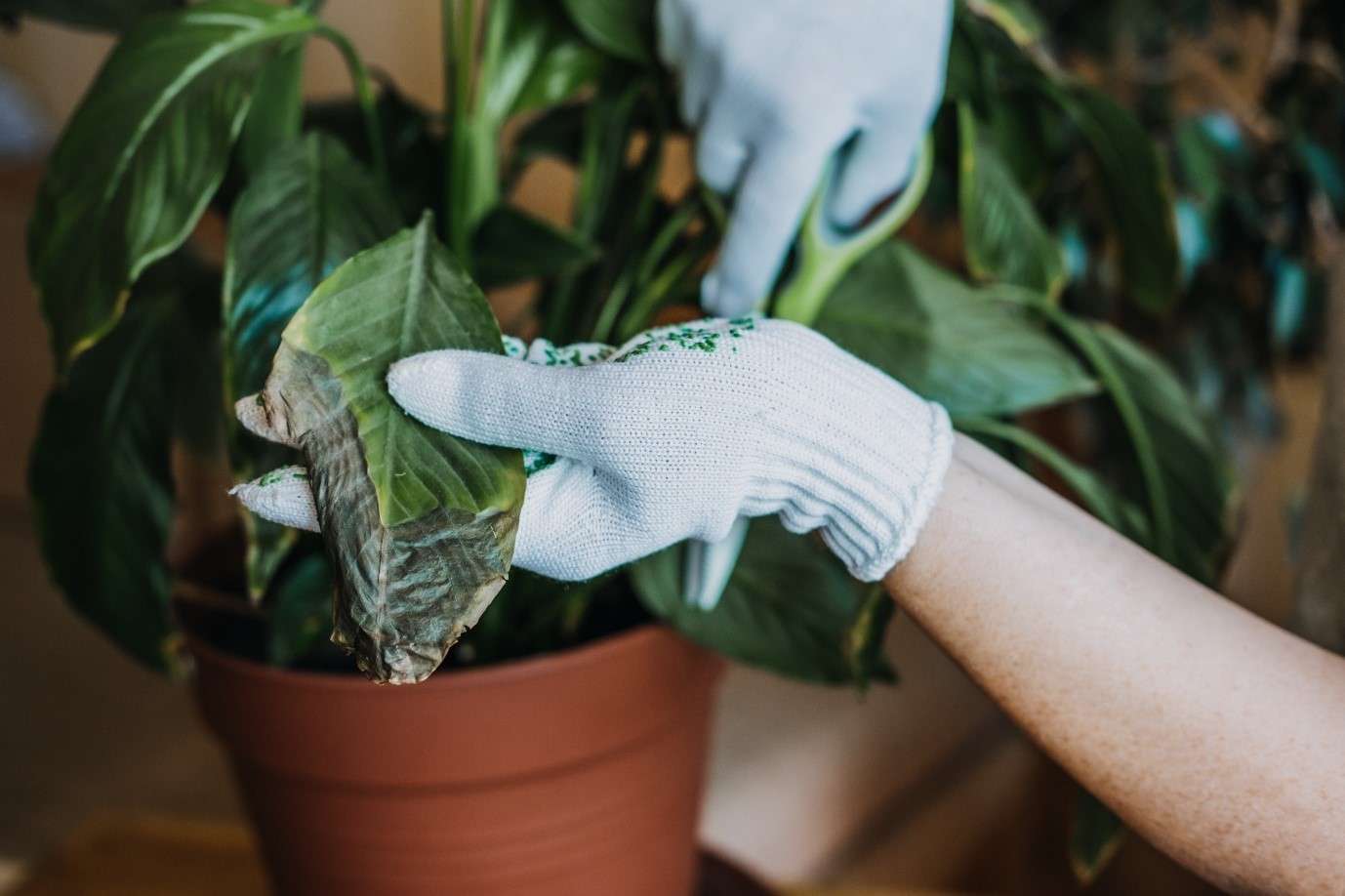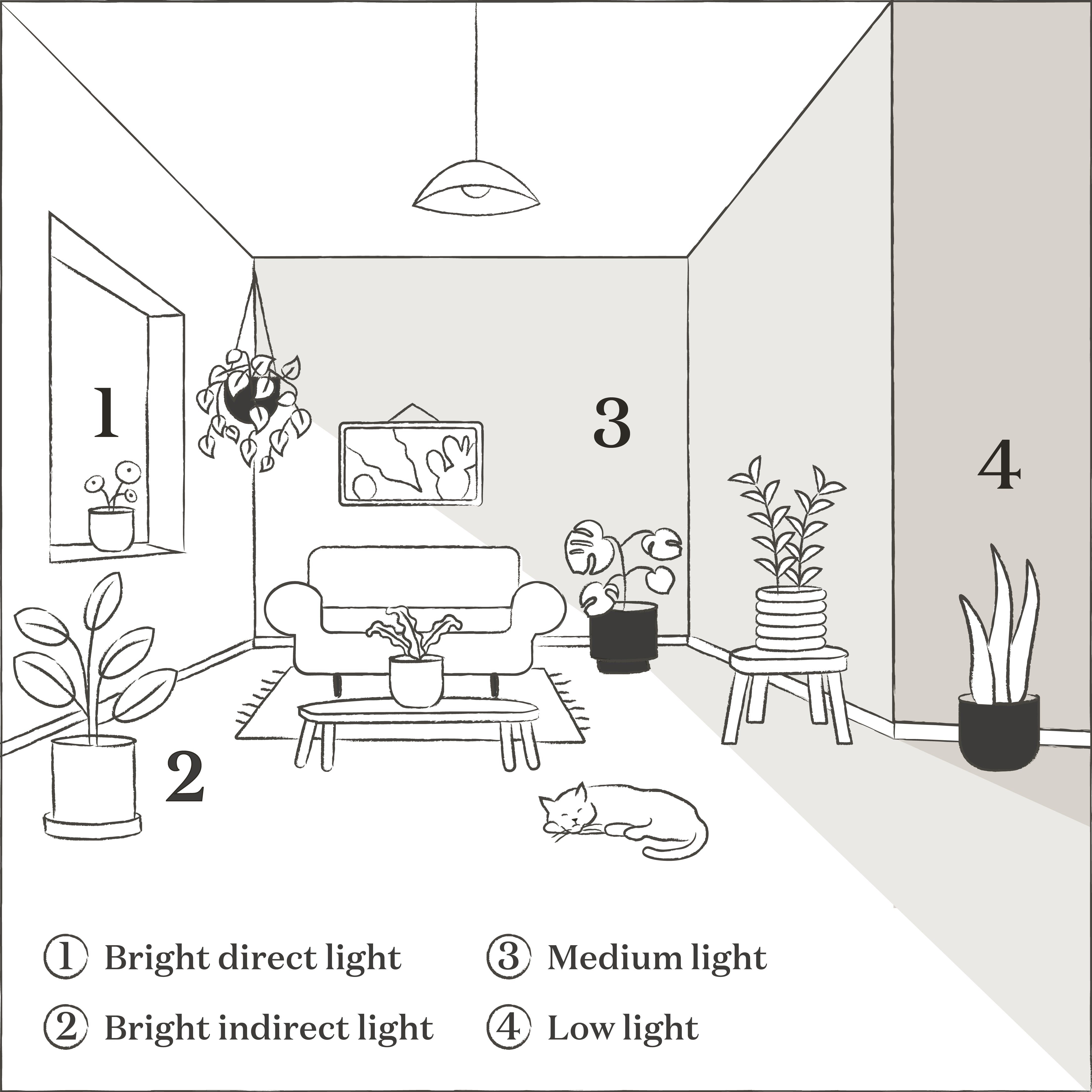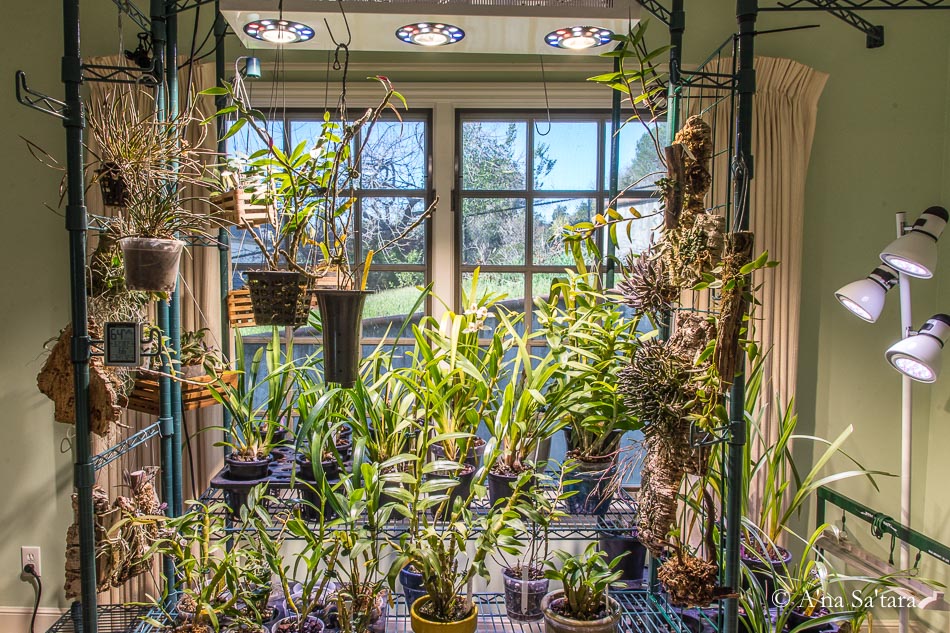Understanding Orchid Lighting Requirements
Orchids, like all plants, require sunlight to undergo photosynthesis and grow. However, the amount of sunlight needed varies greatly among different types of orchids. While some orchids thrive in bright, direct sunlight, others prefer filtered or dappled light. Understanding the specific lighting requirements of your orchid is crucial to provide the optimal conditions for its growth and flowering.
Photosynthesis is the process by which plants convert light energy into chemical energy, and it is essential for the growth and development of orchids. However, too much sunlight can be detrimental to orchids, causing leaf scorch, discoloration, and reduced flowering. On the other hand, insufficient sunlight can lead to weak and spindly growth, reduced flowering, and increased susceptibility to disease.
When considering the lighting needs of your orchid, it is essential to take into account the natural habitat of the plant. For example, orchids that grow in the understory of tropical forests, such as Phalaenopsis and Paphiopedilum, typically require low to moderate light levels. In contrast, orchids that grow in full sun, such as Vanda and Cattleya, require high light levels to thrive.
So, do orchids need a lot of sunlight? The answer depends on the specific type of orchid and its natural habitat. While some orchids can tolerate full sun, others require filtered or dappled light to prevent damage. By understanding the lighting requirements of your orchid, you can provide the optimal conditions for its growth and flowering, and enjoy the beauty and elegance of these exquisite plants.
How to Determine the Right Amount of Sunlight for Your Orchid
To determine the right amount of sunlight for your orchid, it’s essential to assess the lighting conditions in your home or greenhouse. One way to do this is by using a light meter, which measures the intensity of light in a given area. This can help you identify areas that receive direct sunlight, indirect sunlight, or shade.
Another way to assess lighting conditions is by observing natural light patterns. Notice how the light changes throughout the day, and identify areas that receive morning, afternoon, or evening sun. This can help you determine the best spot for your orchid based on its specific lighting needs.
When choosing a spot for your orchid, consider the type of light it requires. If your orchid needs bright, direct sunlight, a south-facing window may be ideal. However, if your orchid prefers filtered or dappled light, an east- or west-facing window may be a better option.
It’s also important to consider the time of day and the season when determining the right amount of sunlight for your orchid. For example, during the summer months, the sun’s rays are stronger, and your orchid may require more shade to prevent scorching. In contrast, during the winter months, the sun’s rays are weaker, and your orchid may require more light to photosynthesize.
So, do orchids need a lot of sunlight? The answer depends on the specific type of orchid and its natural habitat. By assessing the lighting conditions in your home or greenhouse and choosing the right spot for your orchid, you can provide the optimal amount of sunlight for its growth and flowering.
Some popular orchid species and their lighting requirements include:
- Phalaenopsis: Low to moderate light
- Paphiopedilum: Low to moderate light
- Vanda: Bright, direct sunlight
- Cattleya: Bright, direct sunlight
By understanding the lighting requirements of your orchid and providing the right amount of sunlight, you can help it thrive and enjoy its beautiful blooms.
The Dangers of Too Much Sunlight: Preventing Leaf Scorch and Discoloration
While sunlight is essential for orchid growth and flowering, too much direct sunlight can be detrimental to these delicate plants. Leaf scorch, discoloration, and reduced flowering are just a few of the problems that can occur when orchids are exposed to excessive sunlight.
Leaf scorch, also known as sunburn, occurs when the leaves of the orchid are exposed to too much direct sunlight, causing them to become scorched and discolored. This can lead to a reduction in the plant’s ability to photosynthesize, ultimately affecting its growth and flowering.
Discoloration is another common problem that can occur when orchids are exposed to too much sunlight. The leaves and flowers of the plant can become bleached or discolored, losing their natural color and vibrancy.
Reduced flowering is also a common problem that can occur when orchids are exposed to too much sunlight. When the plant is stressed by excessive sunlight, it can reduce its flowering, or in some cases, stop flowering altogether.
So, how can you prevent these problems from occurring? One way is to provide filtered or dappled light to your orchids. This can be achieved by placing a sheer curtain or shade over the window, or by using a light diffuser.
Another way to prevent leaf scorch and discoloration is to choose a location for your orchid that receives bright, indirect sunlight. East- or west-facing windows are ideal for orchids, as they provide gentle, indirect sunlight that is less likely to cause scorching or discoloration.
Finally, it’s essential to monitor your orchid’s response to sunlight and adjust its location as needed. If you notice that your orchid is becoming scorched or discolored, it’s likely that it’s receiving too much direct sunlight. By moving it to a location with filtered or dappled light, you can help prevent these problems from occurring.
By understanding the dangers of too much sunlight and taking steps to prevent leaf scorch and discoloration, you can help your orchids thrive and enjoy their beautiful blooms.
Low-Light Orchids: Which Varieties Thrive in Shady Conditions
While many orchids require bright, direct sunlight to thrive, there are several varieties that can tolerate low-light conditions. These orchids are perfect for growers who don’t have a lot of natural light in their homes or greenhouses, or for those who want to create a shaded, tropical environment.
One of the most popular low-light orchids is the Phalaenopsis, also known as the moth orchid. This orchid is known for its delicate, white blooms and can thrive in low-light conditions, making it perfect for indoor growers. Another popular low-light orchid is the Paphiopedilum, also known as the Venus slipper orchid. This orchid has beautiful, unique blooms and can tolerate low light, but still requires some indirect sunlight to photosynthesize.
Other low-light orchids include the Dendrobium, the Oncidium, and the Miltonia. These orchids are all relatively easy to care for and can thrive in shaded conditions, making them perfect for growers who don’t have a lot of natural light.
When growing low-light orchids, it’s essential to provide them with the right potting mix and fertilization. A well-draining potting mix is crucial to prevent root rot, and a balanced fertilizer will provide the necessary nutrients for healthy growth. It’s also important to water low-light orchids carefully, as they can be prone to overwatering.
In terms of potting mix, a mix specifically designed for orchids is best. This type of mix will be well-draining and contain the necessary nutrients for healthy growth. Some good options include a mix of sphagnum moss, perlite, and fir bark.
For fertilization, a balanced, water-soluble fertilizer is best. This type of fertilizer will provide the necessary nutrients for healthy growth and can be applied once a month. Some good options include a 20-20-20 fertilizer or a fertilizer specifically designed for orchids.
By providing the right potting mix and fertilization, and by choosing a low-light orchid variety, growers can create a beautiful, thriving orchid collection even in shaded conditions.
East-, West-, and South-Facing Windows: How to Make the Most of Natural Light
When it comes to providing natural light for your orchids, the direction of your windows can play a significant role. East-, west-, and south-facing windows each have their own unique benefits and drawbacks, and understanding these can help you make the most of the natural light available to your orchids.
East-facing windows receive gentle, indirect sunlight in the morning, making them ideal for orchids that prefer bright, indirect light. This type of light is perfect for orchids such as Phalaenopsis and Paphiopedilum, which thrive in bright, indirect light.
West-facing windows receive direct sunlight in the afternoon, making them ideal for orchids that prefer bright, direct light. This type of light is perfect for orchids such as Vanda and Cattleya, which thrive in bright, direct light.
South-facing windows receive direct sunlight throughout the day, making them ideal for orchids that prefer full sun. However, this type of light can be intense, and may require shading or filtering to prevent scorching or discoloration.
To make the most of natural light from different directions, it’s essential to understand the specific lighting needs of your orchids. By placing your orchids in the right location, you can provide them with the perfect amount of sunlight to promote healthy growth and flowering.
In addition to natural light, you can also supplement with artificial lighting to provide your orchids with the perfect amount of light. LED grow lights, fluorescent lights, and HPS (High Pressure Sodium) lights are all popular options for orchid growers, and can be used to provide additional light to your orchids.
When using artificial lighting, it’s essential to consider the specific lighting needs of your orchids. Different types of orchids have different lighting requirements, and using the wrong type of light can be detrimental to their health.
By understanding the benefits and drawbacks of different window orientations and using artificial lighting to supplement natural light, you can provide your orchids with the perfect amount of sunlight to promote healthy growth and flowering.
Artificial Lighting Options for Orchids: LED, Fluorescent, and More
When it comes to providing artificial lighting for your orchids, there are several options available. LED grow lights, fluorescent lights, and HPS (High Pressure Sodium) lights are all popular choices among orchid growers. Each type of light has its own pros and cons, and understanding these can help you choose the best option for your orchids.
LED grow lights are a popular choice among orchid growers due to their energy efficiency and long lifespan. They are also relatively cool, which can help prevent overheating and promote healthy growth. However, LED grow lights can be more expensive than other options, and may not provide the same level of intensity as other types of lights.
Fluorescent lights are another popular option for orchid growers. They are relatively inexpensive and provide a good level of intensity, making them a good choice for orchids that require bright, indirect light. However, fluorescent lights can be less energy-efficient than LED grow lights and may not last as long.
HPS (High Pressure Sodium) lights are a popular choice among orchid growers who want to promote blooming and fruiting. They provide a high level of intensity and are relatively energy-efficient, making them a good choice for orchids that require a lot of light. However, HPS lights can be more expensive than other options and may require a ballast to operate.
When choosing an artificial lighting option for your orchids, it’s essential to consider the specific lighting needs of your plants. Different types of orchids have different lighting requirements, and using the wrong type of light can be detrimental to their health.
In addition to the type of light, it’s also important to consider the intensity and duration of the light. Orchids typically require 10-12 hours of light per day, and the intensity of the light will depend on the specific needs of your plants.
By understanding the pros and cons of different artificial lighting options and choosing the right type of light for your orchids, you can provide them with the perfect amount of sunlight to promote healthy growth and flowering.
Monitoring and Adjusting Lighting Conditions for Optimal Orchid Health
Monitoring and adjusting lighting conditions is crucial for optimal orchid health. Orchids are sensitive to changes in lighting, and even small adjustments can have a significant impact on their growth and flowering.
To monitor your orchid’s response to lighting conditions, observe its growth, color, and flowering patterns. Look for signs of stress, such as yellowing or browning leaves, or reduced flowering. If you notice any of these signs, adjust the lighting conditions accordingly.
One way to monitor lighting conditions is to use a light meter. A light meter can help you measure the intensity of light in your home or greenhouse, and adjust the lighting conditions accordingly.
Another way to monitor lighting conditions is to observe the natural light patterns in your home or greenhouse. Observe the direction and intensity of natural light, and adjust the lighting conditions accordingly.
Adjusting lighting conditions can be as simple as moving your orchid to a different location, or adjusting the intensity of artificial lighting. By monitoring and adjusting lighting conditions, you can provide your orchid with the perfect amount of sunlight to promote healthy growth and flowering.
It’s also important to consider the time of day and the season when monitoring and adjusting lighting conditions. For example, during the summer months, the sun’s rays are stronger, and your orchid may require more shade to prevent scorching. In contrast, during the winter months, the sun’s rays are weaker, and your orchid may require more light to photosynthesize.
By monitoring and adjusting lighting conditions, you can provide your orchid with the perfect amount of sunlight to promote healthy growth and flowering. Remember, every orchid is different, and what works for one orchid may not work for another. Experiment and find the perfect balance of light for your unique orchid collection.
Conclusion: Finding the Perfect Balance of Sunlight for Your Orchids
In conclusion, providing the right amount of sunlight for your orchids is crucial for their growth and flowering. While some orchids require a lot of sunlight, others prefer shadier conditions. By understanding the specific lighting needs of your orchids and providing the right amount of sunlight, you can promote healthy growth and flowering.
Remember, every orchid is different, and what works for one orchid may not work for another. Experiment and find the perfect balance of light for your unique orchid collection. With the right amount of sunlight, your orchids will thrive and provide you with beautiful blooms for years to come.
By following the tips and guidelines outlined in this article, you can provide your orchids with the perfect amount of sunlight to promote healthy growth and flowering. Whether you’re a seasoned orchid grower or just starting out, this article has provided you with the knowledge and tools you need to succeed.
So, do orchids need a lot of sunlight? The answer is, it depends on the specific type of orchid. By understanding the lighting needs of your orchids and providing the right amount of sunlight, you can promote healthy growth and flowering. Experiment and find the perfect balance of light for your unique orchid collection, and enjoy the beauty and elegance of these exquisite plants.






.jpg)
